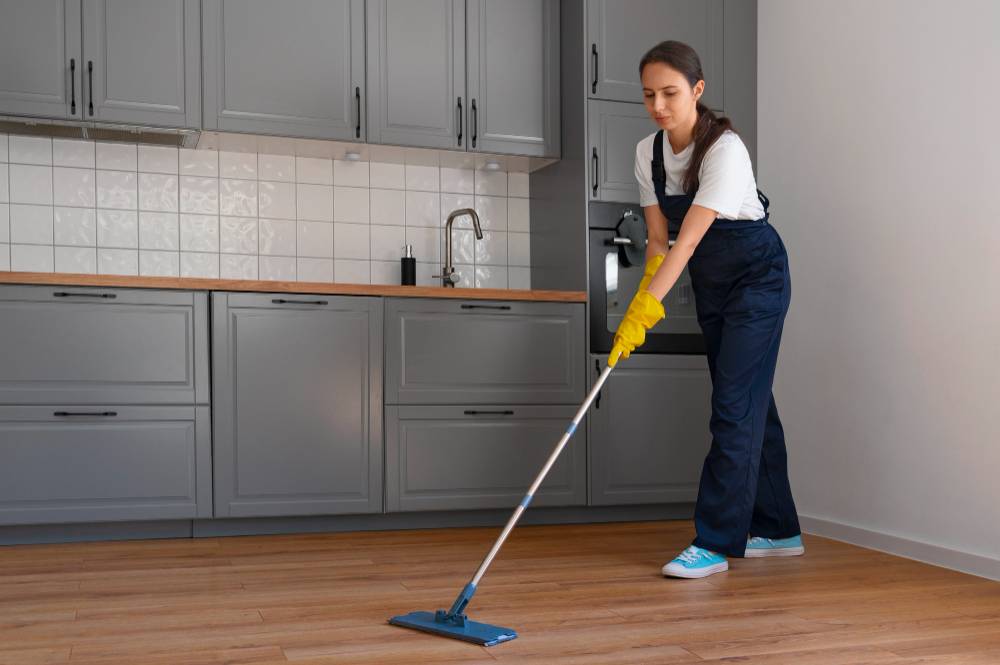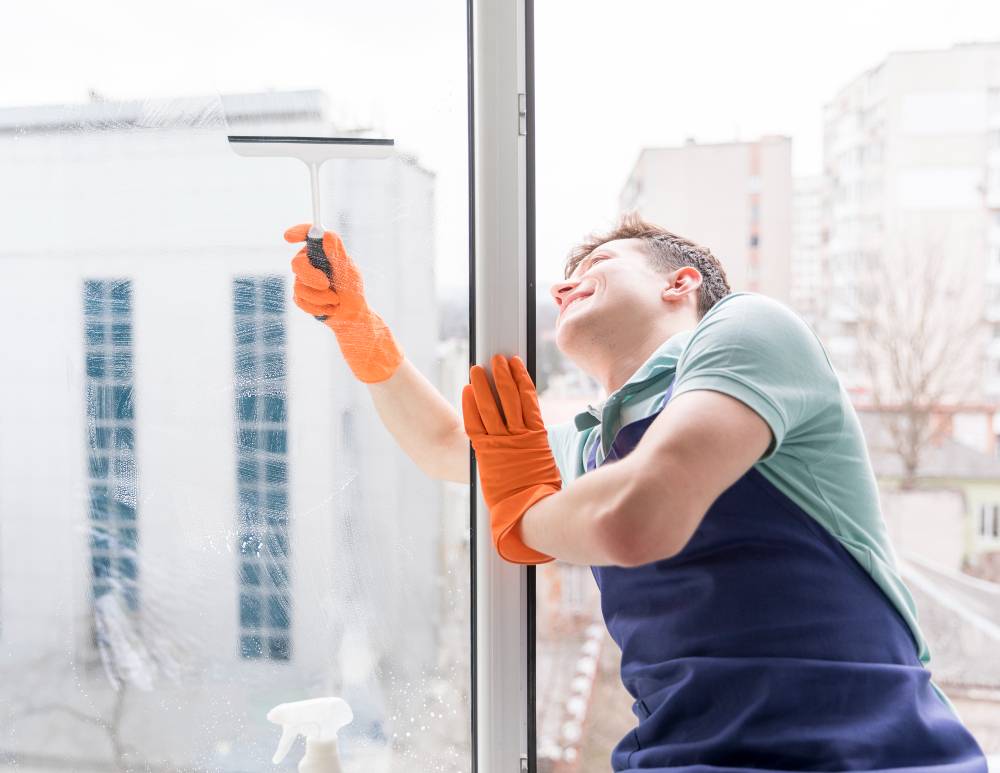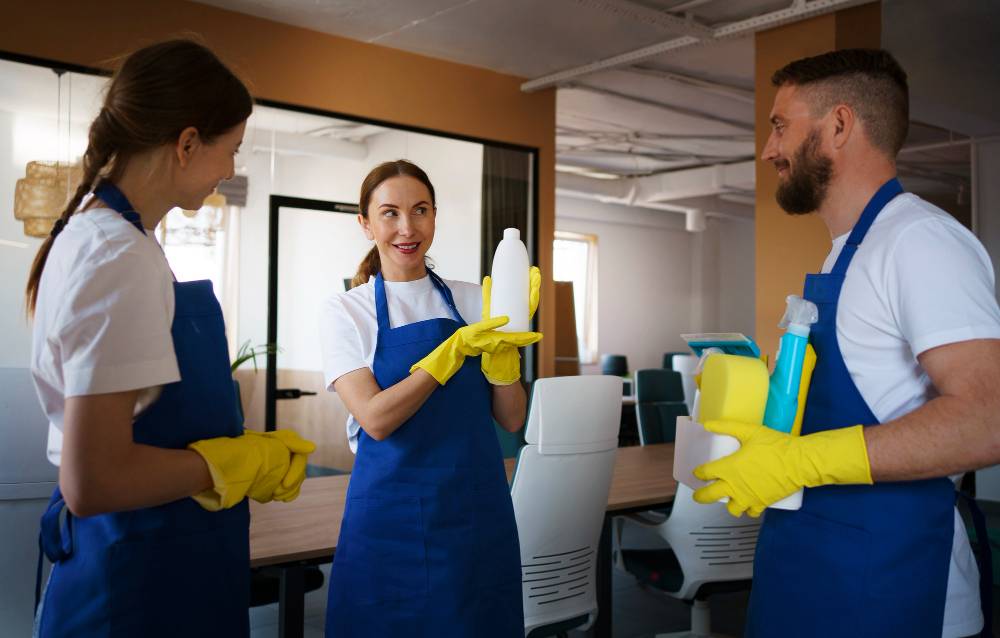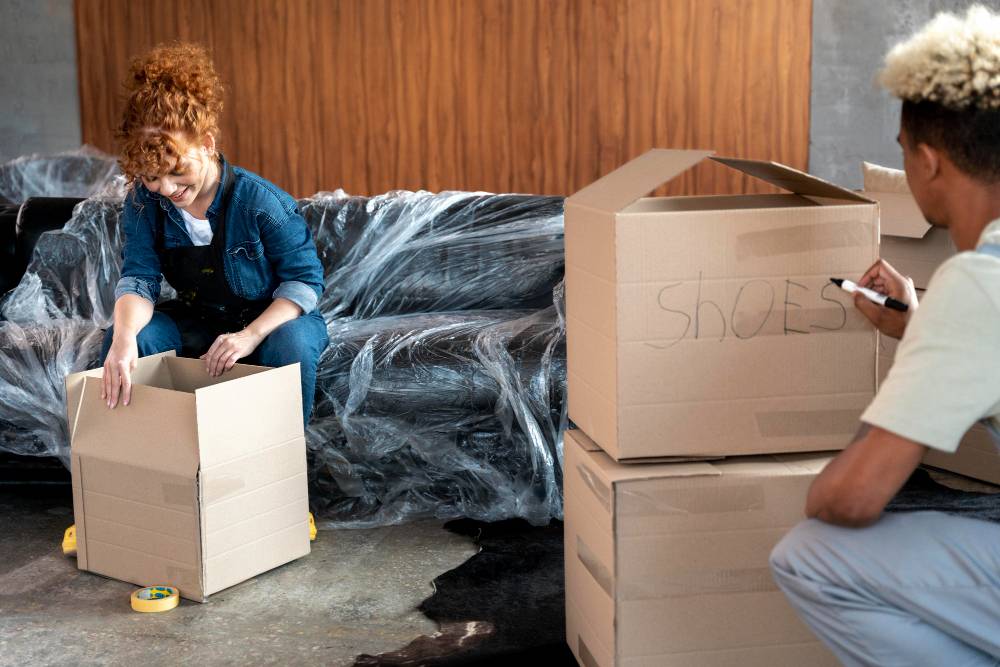Winter is just around the corner, and while snowflakes and frosty mornings might bring a sense of seasonal charm, they also bring challenges for building maintenance.
As a building manager or property owner, a proactive approach to cleaning and maintenance can make all the difference in keeping your property safe, functional, and comfortable.
In this guide, we’ll dive into a detailed checklist to help you tackle winter preparation head-on.
Exterior Preparation: Protecting the First Line of Defense
The exterior of your building is your first defense against winter’s harsh elements. A thorough inspection and maintenance plan can help prevent damage and ensure safety.
-
Entrance and Walkway Maintenance
Slippery walkways and icy entrances aren’t just inconvenient—they’re safety hazards. Addressing these areas now can prevent accidents and costly repairs.
- Install heavy-duty entrance mats with at least 15 feet of matting to trap snow and debris.
- Clean and repair all exterior walkways, ensuring they’re free from cracks.
- Prepare salt or sand mixture stations and check ice melt dispensers for functionality.
- Clean exterior drainage systems to prevent water from freezing and creating hazards.
- Test outdoor lighting systems to ensure pathways remain visible during long winter nights.
-
Building Envelope: Sealing the Elements Out
A well-sealed building keeps warmth in and cold out, reducing energy costs and preventing damage. Winter-proofing your building envelope is a key step.
- Clean gutters and downspouts thoroughly to avoid ice dams and water backups.
- Inspect and clean roof drainage systems to prevent snowmelt from pooling.
- Check windows and doors for cracks, gaps, or broken seals, and apply caulk or weatherstripping as needed.
- Examine the building’s exterior for cracks or structural issues that could worsen in freezing temperatures.
- Clear external vents and exhaust outlets to prevent blockages from snow or debris.
- Wash windows and frames to maximize natural light during shorter winter days.
Interior Preparation: Keep Things Warm, Safe, and Functional
The inside of your building should be a sanctuary from the cold. Here’s how to make sure it stays that way:

-
Flooring Systems
Winter wreaks havoc on floors, with salt, moisture, and heavy foot traffic taking a toll.
- Deep clean all carpeted areas to remove built-up dirt and debris before winter.
- Apply winter-specific sealants to hard floors to protect against moisture damage.
- Install additional matting in high-traffic areas to reduce wear and tear.
- Stock winter-specific cleaning supplies like salt neutralizers and anti-slip treatments.
- Establish salt cleanup protocols to quickly address residue before it damages floors.
-
HVAC and Ventilation
Your heating system will be the backbone of your building’s comfort during winter. Don’t wait for a breakdown to address issues.
- Clean all air vents and returns to improve airflow and air quality.
- Replace air filters and inspect heating systems for efficiency.
- Test humidity control systems to prevent overly dry indoor air, which can damage furniture and irritate occupants.
- Clean and maintain humidifiers to support balanced indoor moisture levels.
-
Common Areas
The spaces everyone uses need special attention during winter.
- Deep clean lobby areas to create a welcoming environment.
- Set up wet floor sign stations to minimize slip hazards.
- Prepare emergency cleaning kits with supplies for unexpected messes.
Equipment and Supply Preparation: Be Ready for Anything
-
Winter Cleaning Equipment
Having the right tools on hand can make all the difference when winter storms hit.
- Service all floor cleaning machines, snow removal equipment, and pressure washers.
- Prepare ice melt spreaders and check wet/dry vacuums.
- Inspect and maintain salt spreaders to ensure they’re in good working order.
-
Cleaning Supplies
Stock up on supplies to avoid mid-winter shortages.
- Purchase winter-specific floor cleaners and entrance mat cleaning products.
- Acquire salt neutralizers to combat residue buildup on floors.
- Ensure you have plenty of microfiber cloths and emergency cleanup supplies on hand.
Safety Protocols: Prepare for the Unexpected
-
Emergency Response
Winter brings unpredictable weather, so having a plan in place is vital.
- Update emergency contact lists and incident response plans.
- Stock first aid supplies and create slip-and-fall prevention kits.
- Review insurance coverage to ensure your building is protected against winter-related incidents.
-
Staff Training
Your team should be equipped with the knowledge and skills to handle winter challenges.
- Conduct training sessions on ice melt application, emergency protocols, and equipment operation.
- Review slip-and-fall prevention measures and document all training activities for accountability.
Specialized Areas: Address Key Spaces
Restrooms
Restrooms often see increased moisture and foot traffic during winter.
- Clean all fixtures and surfaces, and ensure floor drains function properly.
- Stock winter cleaning supplies like anti-slip treatments and matting.
Break Rooms and Kitchens
These areas need to stay hygienic and functional year-round.
- Clean and maintain water systems, ice machines, and ventilation hoods.
- Organize storage areas and update cleaning schedules for high-use areas.
Final Preparation Steps: Quality and System Checks
- Conduct a full building inspection to verify cleaning standards and safety protocols.
- Test heating, ventilation, and cleaning equipment for efficiency.
- Review staff readiness and emergency plans to ensure a smooth winter season.
Conclusion: Staying Ahead of Winter’s Challenges
Winter preparation isn’t just a task. It invests in your building’s safety, efficiency, and longevity. By following this detailed checklist, you’ll be ready to tackle the harshest weather with confidence. Remember, a well-prepared building doesn’t just survive winter; it thrives in it. So start early, stay proactive, and enjoy the peace of mind of being fully prepared.
FAQs




